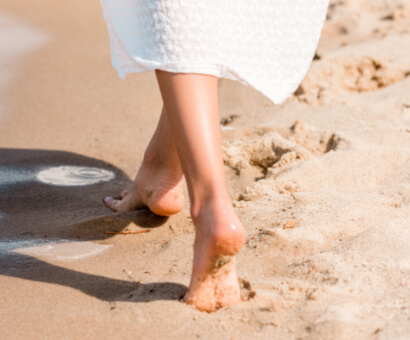HEELS AND FEET
We use our feet constantly. The skin of our heels and soles is adapted to that. Therefore they have the thickest layer of skin of the whole body.
Rough, dry and cracked heels may have various causes. Among the most common are unsuitable shoes, inappropriate care, increased loading of the feet, changing shoes between seasons, walking barefoot, decreased production of sebum and poor hydration that worsens with age.

